Rifle scope numbers are gibberish to the person new to optics. Fortunately, they are easy to interpret.
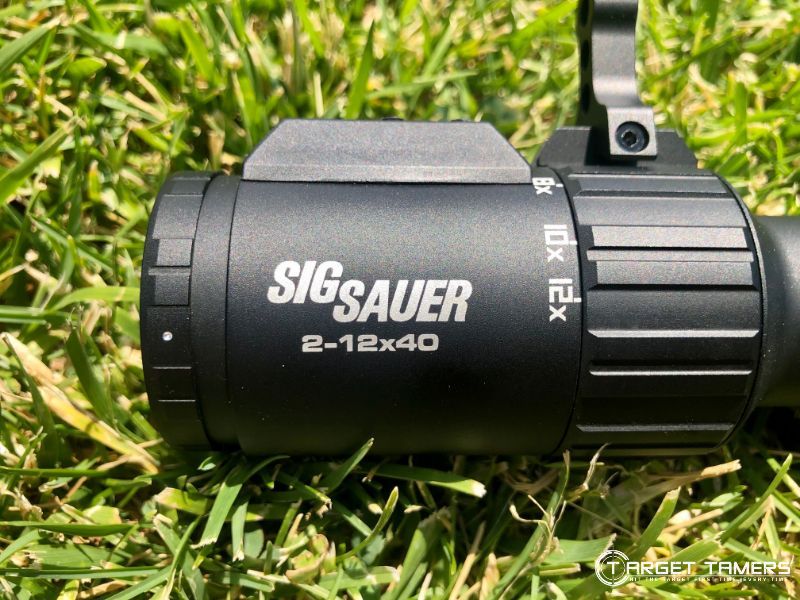
The numbers on a rifle scope are often part of the scope model name. It is a convenient way to quickly determine the magnifying power range and the size of the objective lens. The number before the “X” is the magnification and the following number is the aperture (objective lens diameter).
Here is an easy-to-follow explanation on interpreting what the numbers on a rifle scope mean. You’ll also get more information on other riflescope features that have their own set of numbers and what they mean.
What do the Numbers on a Rifle Scope Mean?
The two sets of numbers on a rifle scope represent the magnification and objective lens size. The numbers before the “X” specify the magnification. The number after the “X” specifies the diameter of the objective lens. This is identifies important aspects of a rifle scope.
Example: 3-9x40
= 3-9x magnification and a 40mm objective lens
Magnification/Power
When magnification numbers are separated by a dash, the scope has variable magnification. This is also commonly referred to as ‘zoom’ to express the variable range of magnification.
For example, a 4-12x40 rifle scope has magnification that can change from 4x at its lowest to 12x at its highest.
If there is only one number before the “X,” this indicates that the scope has fixed magnification.
For example, a 6x42 rifle scope has only 6x magnification that cannot be manipulated to ‘zoom’ in or out. It is fixed.
What is Magnification on a Rifle Scope?
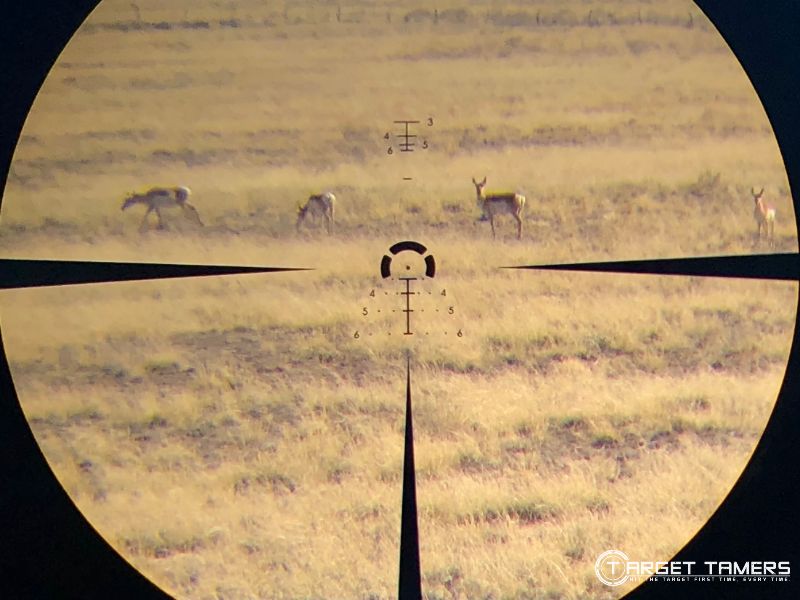
Magnification and power are terms that are used interchangeably. Sport optics provide magnification to improve target visibility at various distances for multiple types of shooting applications. The magnification number tells you how magnified the image will be when looking through the scope.
For example, in a 4x fixed rifle scope, the image will appear to be four times (4x) closer and larger compared to what you are seeing with the naked eye.
Where is the Magnification on a Rifle Scope?
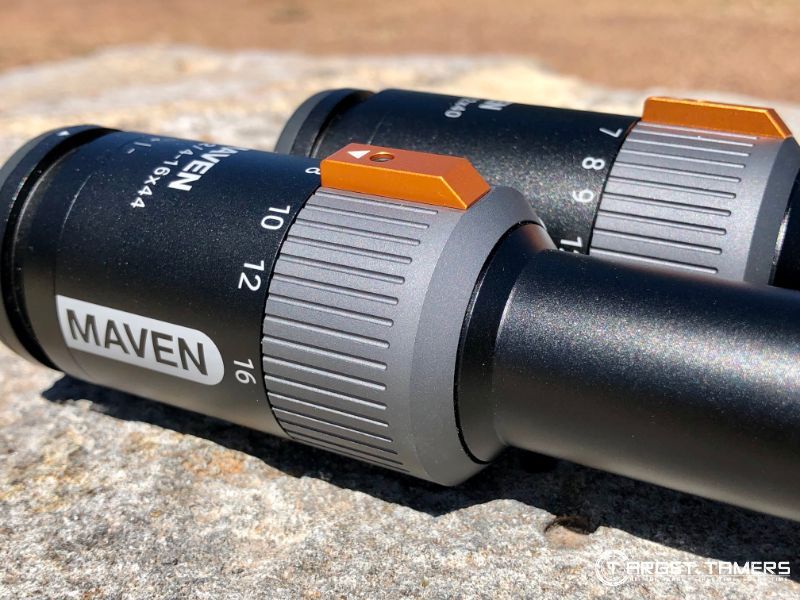
The magnification assembly is located towards the rear of a rifle scope close to the ocular (eyepiece) lens. If it is a variable power scope, the magnifying assembly is manipulated via the magnification ring or knob.
By turning the ring in one direction, it will increase magnification. Conversely, turning the ring in the opposite direction will decrease magnification.
How Much Magnification do I Need?
Magnification should be determined by the application. For example, long range and competition shooters will require higher magnification ranges than the whitetail hunter in the woods. Define the purpose and then select the equipment. In short, choose the magnification that fits the application.
For a more in-depth explanation on magnification for different distances and typical applications, check out the Best Rifle Scope Magnification guide.
Objective Lens Size/Aperture
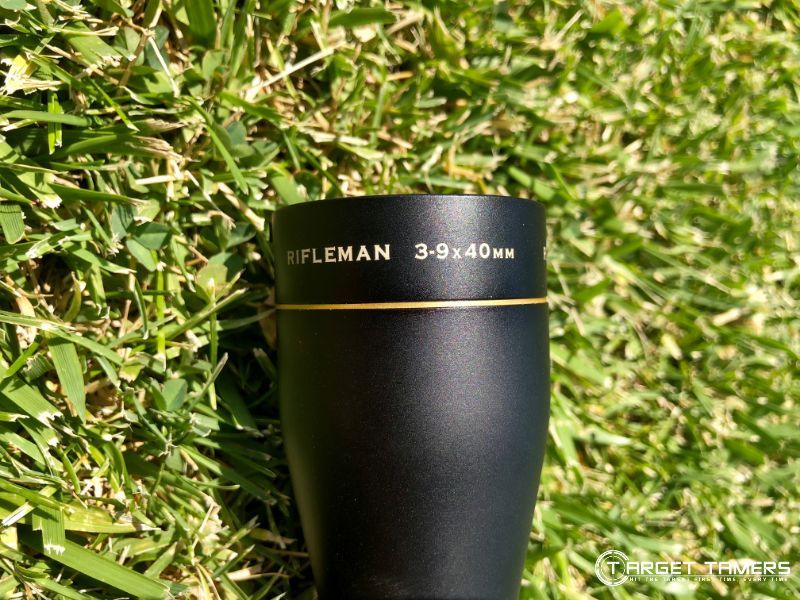
The number after the “X” on a rifle scope is the diameter of the objective lens. This is also called the aperture. Although not always referenced, the aperture is measured in millimeters (mm). The aperture determines how much light can enter the scope.
Example: 2-7x32
= 32mm aperture (objective lens diameter)
What is the Objective Lens on a Rifle Scope?
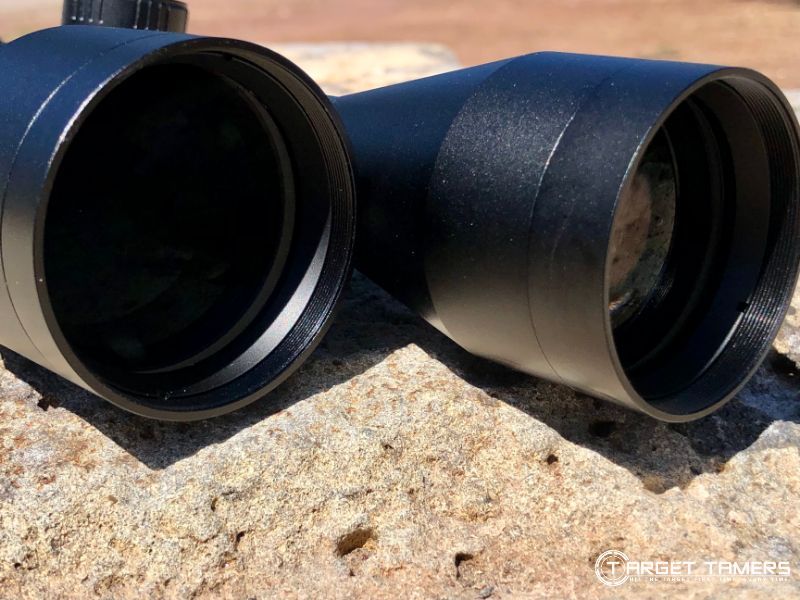
The objective lens is the circular glass lens found at the front end of a rifle scope. It is housed within what is known as the objective bell. The objective bell will be slightly wider than the actual objective lens. This is the first point of contact between light and the optics in a rifle scope.
Generally, the larger the aperture, the more light can enter the scope and can be transmitted to the eye for bright and clear seeing.
The objective lens can be coated with an exterior coating to provide resistance against scratches, water, dust, oil, etc.
Is a Bigger Objective Lens Better?
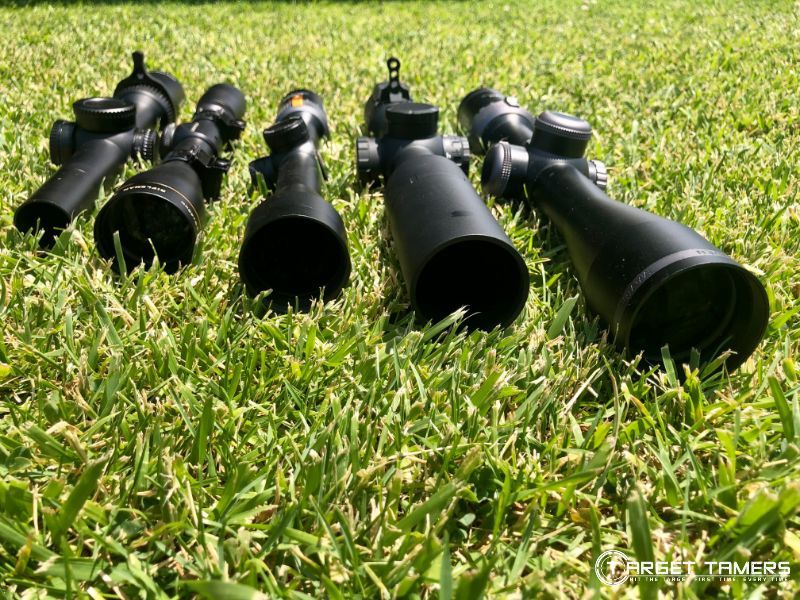
Larger apertures are desired for strong low-light performance benefits especially in hunting applications. However, big apertures require big objective bells which means an overall larger and heavier rifle scope. This can affect mounting profile and overall equipment (rifle plus scope) weight.
For enlightenment on this topic, see our Why & How Lens Size Matters guide.
Numbers on Rifle Scope Example Chart
| Riflescope | Magnification | Magnification Type | Aperture Size |
|---|---|---|---|
| 4x32 | 4x | Fixed | 32mm |
| 6x42 | 6x | Fixed | 42mm |
| 1-10x24 | 1-10x | Variable | 24mm |
| 3-9x40 | 3-9x | Variable | 40mm |
| 5.5-22x56 | 5.5-22x | Variable | 56mm |
Rifle Scope Features to Consider
Magnification and objective lens size are not the only rifle scope numbers to consider. Other important specs include FOV, eye relief, reticle type, and glass quality. This is a brief overview of each feature.
Field of View (FOV)
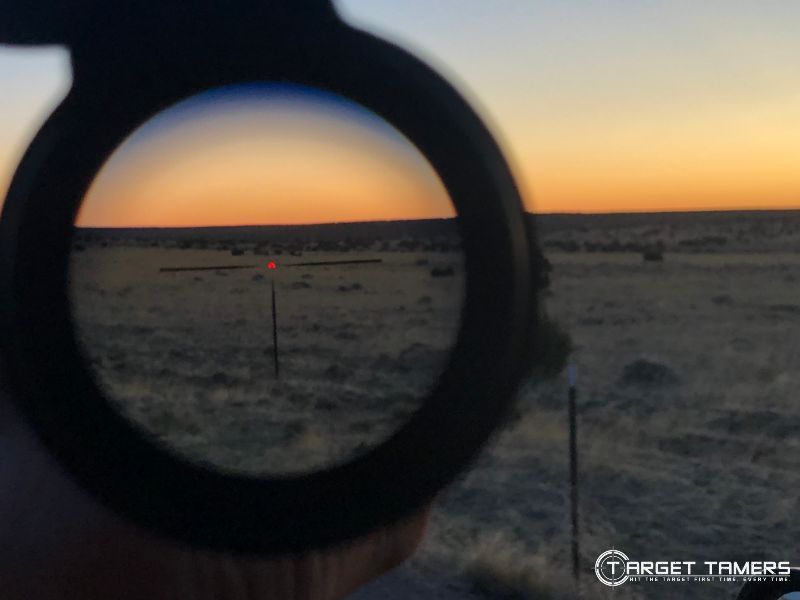
The FOV is the measured area of space that you can see through the riflescope. It is usually listed in the specs as a linear distance in feet/meters at 100 yards/meters. When zooming in or out on variable riflescopes, the FOV is affected.
When increasing magnification, the FOV becomes narrow. When decreasing magnification, the FOV becomes wider. A wide FOV is desired for fast target acquisition. For more info about FOV, we have a Field of View Explained guide that delves into it.
Eye Relief
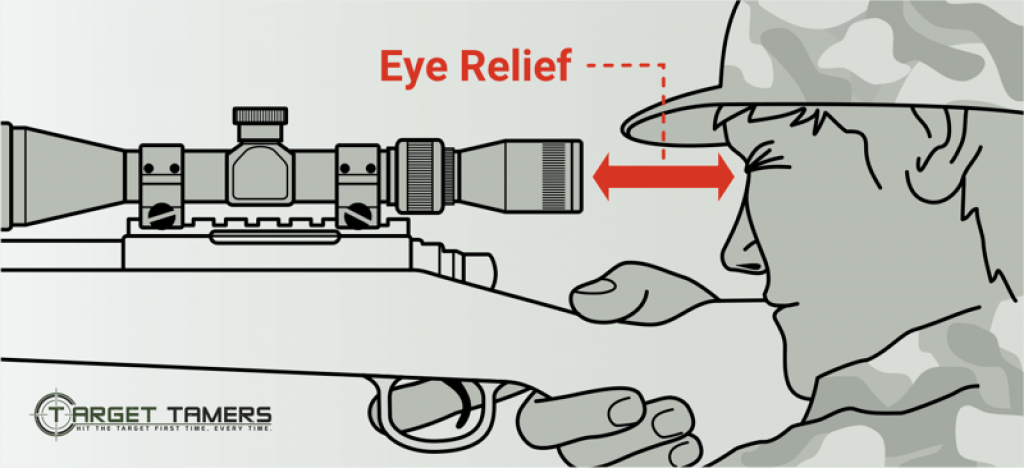
The eye relief is the measured distance in millimeters or inches from the eyepiece of the rifle scope to where your eye is placed to see the entire FOV without optical aberrations. This spec is vital because too short of eye relief can be detrimental for the shooter.
While 2” of eye relief is considered an adequate minimum, eye relief of 4” is usually desired especially with heavy recoil calibers.
The eye relief and exit pupil specs can also provide an idea of how forgiving an eyebox can be. The eyebox can be considered the space in which you can still see the entire FOV and reticle without aberrations even when you are not perfectly aligned inside the optimal parameters of eye relief. High magnification can affect the eyebox, eye relief, and exit pupil.
Every riflescope is different from one to the next with eye relief specs, so brush up on what it means in our What is Eye Relief guide.
Reticle Type
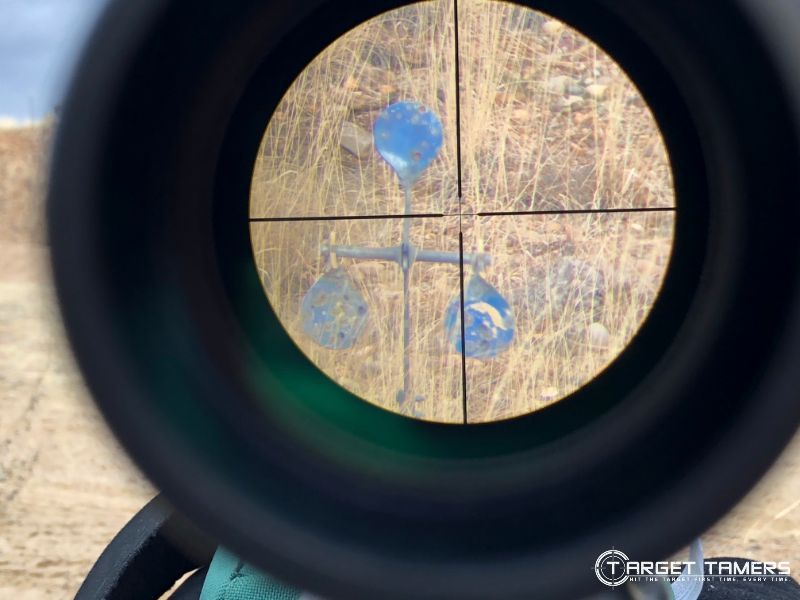
There are at least two parts to reticles that you must consider: reticle design and reticle focal plane. Choose the reticle that is most appropriate for the application.
BDC, mil-dot, and complex designs allow for elevation and/or windage holdovers. This may be necessary for long-range work, follow-up correction shots in hunting, and competition. But not everyone needs a complicated reticle. Our How to Choose the Right Reticle guide will get you squared away.
Now reticles are either in the first focal plane or second focal plane. This is a necessary feature you must consider as magnification will affect how the reticle behaves. The FFP VS SFP guide will narrow down which focal plane reticle will best suit your needs.
Glass Quality
There is no riflescope feature that will supersede optical quality no matter how impressive the specs may be. Without clear glass to provide resolving power, high magnification, FFP reticles, and all the ‘upgrades’ will be of no use.
Most manufacturers do not disclose their glass sources or processing methods, but it is agreed that the most well-known brands tend to provide a certain standard of glass quality. Additionally, glass coatings improve light transmission throughout the optical path. Again, while there are coating standards that can give the buyer an idea of quality, every manufacturer will have their own set of quality standards.
If you have aging eyes, there are other scope features and numbers you may want to consider. Additional information from our Optics for Poor Vision guide will provide clarity.
The Numbers Story
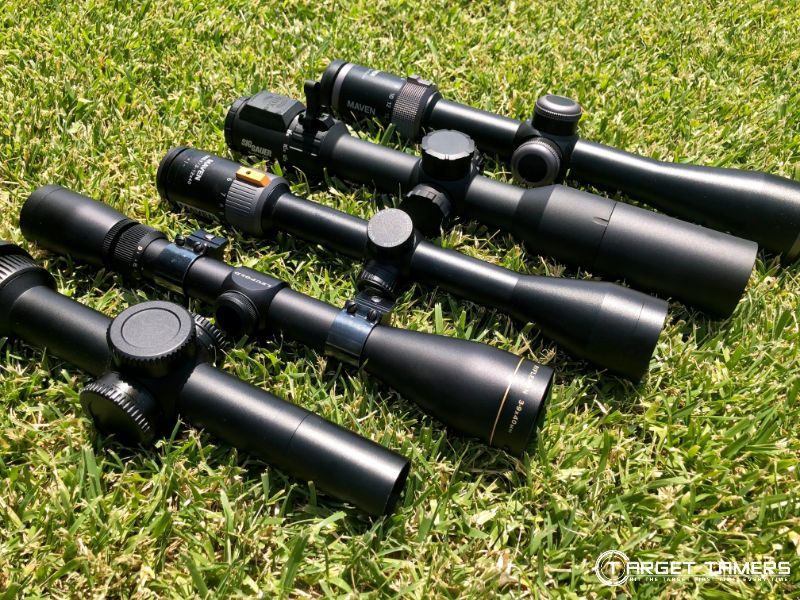
Like all good stories, there is a lesson to be learned. While you may have thought that the only numbers to interpret were the ones printed on a riflescope, you’ve realized by now that there are more numbers to be understood.
The best way to learn the numbers is to handle a scope in person. When you can put what you’re learning to use with hands-on experience, the understanding comes.
Don’t be afraid to browse at retailers, try out a demo program, or sign up for shooting classes where you can handle various scopes. You might find that you don’t need as much magnification as you thought or that long eye relief is a must-have requirement when 2” on paper sounded adequate.
After all, the numbers are just numbers. The story you really want to know is how the scope will perform for your intended application.
Further Reading





